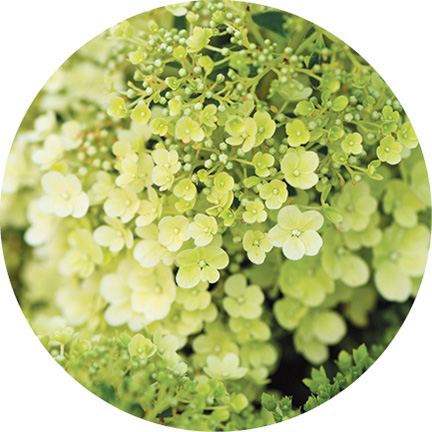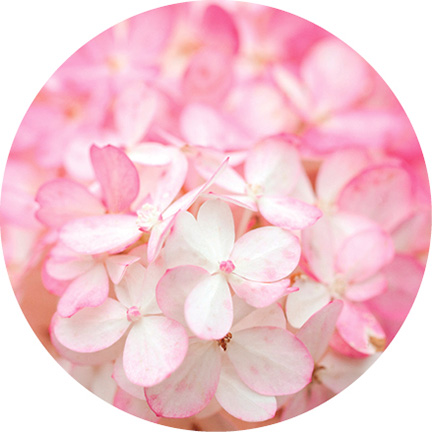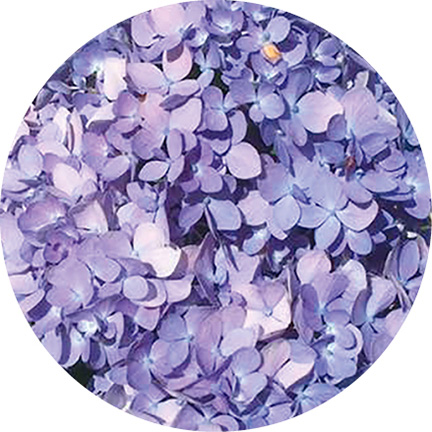Hydrangea, Hydrangea Everywhere, But When Do I Prune?
Hydrangeas are one of my favorite flowering shrubs, as well as my mom’s. One type or another was always in bloom around the house, providing fresh cut flowers for the dining room table.
I think I might have given my mom a small potted hydrangea every year for Mother’s Day. She planted it with care in an empty space in the garden or repotted it in larger containers. I don’t know if every single one survived, but many did and they provided years of enjoyment.
There are numerous species and cultivars to choose from so it can be mind-boggling. Mom had a Vanilla Strawberry™ Hydrangea just off the rear deck, a few ‘Limelight’ hydrangeas in the back as well, and some in containers. She had a lacecap hydrangea near the side yard. But my mom’s favorites are the ones that turn blue and pink, depending on the soil pH—and she strived for all the blue she could muster. There was a huge bigleaf hydrangea below our front porch that bloomed consistently every year, and it was a magnificent electric blue (now memorialized in a watercolor by one of our dear friends.)
With all these varieties it can get confusing on care and maintenance. Here are some pointers in order to get the most out these gorgeous shrubs.
There are five major groups of hydrangea:
Bigleaf hydrangea include the mopheads (think traditional blue and pink), the lacecaps which have a different flowering pattern, and mountain hydrangeas that have smaller flowers but sturdier stems. You might recognize some of the names in this group such as ‘Endless Summer,’ ‘Twist-N-Shout,’ or ‘Tuff Stuff.’
Next are the panicle hydrangeas; they have more spike-like or cone-shaped flowers and can come in a wide range of colors. These seem to be a little more durable in our planting zone. ‘Strawberry Shake,’ ‘Limelight,’ and ‘Tinky Winky’ come to mind in this group.
Smooth hydrangeas are another group and are actually native to the southeastern United States. They can grow very large and, if left to their own devices, be used as privacy hedges. ‘Annabelle,’ ‘Incrediball,’ and ‘Invincibelle’ are a few common names you will see at the nursery.
The next group is my favorite, the oakleaf hydrangeas, named for the large leaves that resemble those of an oak. These shrubs are native to the southeastern and Mid-Atlantic region, and the leaves can turn a brilliant shade of reddish-purple in autumn. Flowers can be large and have a cone-like form. ‘Snow Queen,’ ‘Ruby Slippers,’ and ‘Alice’ are a few examples.
The last group of hydrangea is the climbing hydrangea. It’s a vine that can climb structures by using suckers that attach themselves and hold fast. They need major support as they get rather large and heavy with age. They display a white profusion of flowers all over the vines and can be quite stunning.
If you have the traditional pink/blue mophead hydrangea in your garden and would like to steer the color to more blue, you must amend your soil and make it more acidic. This can be done by adding sulfur to the soil. To make them more pinkish, make the soil more alkaline by adding ground lime. If your soil pH is in the mid range (6.0 to 7.0), you may get a purplish color or a mix of blue and pink.
Now, about pruning:
The mophead hydrangeas do not really need to be pruned, ever. You can remove dead stems and the spent blooms as you see fit. This type of hydrangea blooms on old wood, so if you prune back this shrub you will not get new blooms the following season. If you need to invigorate the shrub after a few years, then cut 1/3 of the older stems to the ground.
Lacecap or oakleaf hydrangea must be pruned in early summer, so the opportunity is past. This way they have a chance of setting buds for the following year.
The panicle hydrangeas and smooth hydrangeas bloom on new wood. These types can be pruned almost anytime with the exception of spring or early summer when they are just about to bloom. Some gardeners prune smooth hydrangeas down to the ground to keep them in a manageable size, however, this may cause the blooms to be very heavy on the stems and they will flop over. Panicle hydrangeas really only need to be pruned about once every three years. Taking out crossed branches (that rub each other) will also help keep the plant in better form.
A tip for cutting blooms to bring indoors: If cutting blooms after August 1, cut down only to the first set of large leaves without disturbing the buds for next year’s blooms.
The hydrangeas’ beauty comes every year, putting smiles on all that behold them. Every shade is special and each one is unique. I’m reminded of another quote from a nature lover, Lady Bird Johnson: “Where flowers bloom, so does hope.” ▼
Eric W. Wahl, RLA is a landscape architect at Element Design Group and president of the Delaware Native Plant Society.



